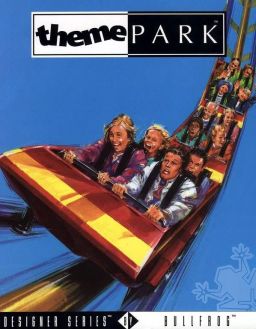
Theme Park is a construction and management simulation video game developed by Bullfrog Productions and published by Electronic Arts in 1994. The player designs and operates an amusement park, with the goal of making money and creating theme parks worldwide. The game is the first instalment in Bullfrog's Theme series and their Designer Series.

Galaxy Fight: Universal Warriors is a fighting game originally developed and published by Sunsoft in 1995 for the Neo-Geo MVS in arcades, and then for the Neo Geo AES console. It was Sunsoft's second fighting game after their 1994 Super Famicom spin-off of their Hebereke series, Sugoi Hebereke, as well as their first side-viewed 2D fighting game.

Dragon Ball Z: Idainaru Dragon Ball Densetsu is a 1996 fighting video game co-developed by BEC and Tose and published by Bandai for the PlayStation and Sega Saturn. Based upon Akira Toriyama's Dragon Ball franchise, following the Saiyan arc to the conclusion of the Majin Buu saga, it is the first three-dimensional fighting game in the series prior to Budokai Tenkaichi. Its gameplay consists of three-on-three fights taking place on free-roaming 3D arenas, using a main six-button configuration, featuring special moves as well as three playable modes.

Rad Mobile is a racing arcade game developed by Sega AM3 and published by Sega. It was first published in Japan in October 1990, followed by an international release for arcades in February 1991. Rad Mobile was Sega's first 32-bit game, using Sega's System 32 arcade system board. It was also the first appearance of Sonic the Hedgehog, who appears as an ornament hanging from the driver's rearview mirror.
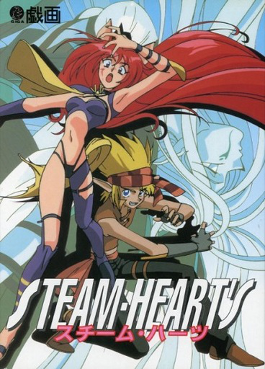
Steam-Heart's is a vertically scrolling shooter and eroge developed by Giga and published by TGL. The story follows two siblings as they fight off a virus that is possessing the people in their world. The game features shooter gameplay paired with ample erotic cutscenes with scantily clad women. Steam-Heart's was initially released on PC-98 personal computers in 1994. It was released for the PC Engine Super CD-ROM² System in 1996 and then the Sega Saturn in 1998. All releases have been limited to the Japanese market. Critics generally found the gameplay to be average, with the erotic content being the sole distinguishing feature.

Choro-Q is a line of Japanese 3–4 cm pullback car toys produced by Takara. Known in North America as Penny Racers, they were introduced in late 1978 and have seen multiple revisions and successors since. Choro-Qs are stylized after real-world automobiles, with real rubber wheels and a pullback motor that makes them move. Each car has a coin slot at the back, where inserting a penny will make it perform a wheelie when the car is released.

Deep Fear is a 1998 survival horror video game co-developed by System Sacom and Sega CS2, and published by Sega for the Sega Saturn. It never saw a North American release. Set on the underwater Big Table research facility, the player controls John Mayor as an unknown infection begins transforming the facility staff into hostile mutants. Gameplay has Mayor exploring the Big Table, gathering items and resources while fighting enemies.
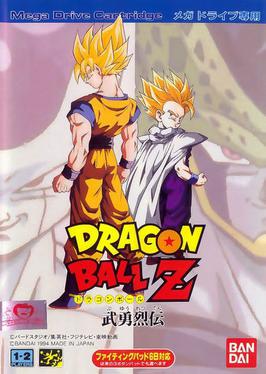
Dragon Ball Z: Buyū Retsuden is a 1994 fighting video game developed and published by Bandai and Ecofilmes for the Sega Mega Drive. Based upon Akira Toriyama's Dragon Ball franchise, it is the only game in the series released for the Mega Drive, following the Frieza and Cell sagas. Its gameplay has been described as a combination of the original Super Butōden and Super Butōden 2, consisting of one-on-one fights using a three-button configuration, featuring special moves and two playable modes.

Tommy Lasorda Baseball is a 1989 baseball video game developed and published by Sega as one of the six launch titles for the Sega Genesis in the North America and for the Sega Mega-Tech arcade system. It is a follow-up to the arcade game Super League (1987). It prominently features former MLB player Tommy Lasorda, who was manager of the Los Angeles Dodgers at the time. In the game, players compete with either AI-controlled opponents or against other players across single exhibitions, open matches or a 30-game season.
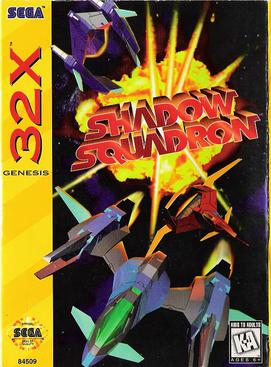
Shadow Squadron is a space combat simulation video game developed and published by Sega exclusively for the 32X add-on first in Japan on 26 April 1995, then in North America and Europe in June of the same year.

Baldies is a 1995 real-time strategy video game developed by Creative Edge Software and originally published by Atari Corporation for the Atari Jaguar CD. It was later ported to the PC, PlayStation, Sega Saturn, and Macintosh. In the game, the player manages a community of Baldies in order to build structures, increase their population, and create weapons to fight against enemies known as Hairies. There are four classes of Baldies and each structure has specific properties to assist the player. Its gameplay combines strategy with simulation and god game elements. Up to four players can participate in a multiplayer mode via local area network (LAN) on PC.

Nanatsu Kaze no Shima Monogatari is a 1997 graphic adventure video game developed by Givro Corporation and published by Enix for the Sega Saturn. The last game to be created by Givro prior to their dissolution in 1998, the title takes place on a mysterious island, as players assume the role of a dragon named Gaūpu to meet various creatures inhabiting the location while harnessing seven legendary winds to overcome obstacles. It received positive reception from critics and reviewers alike, with high praise given towards its hand-drawn visuals.
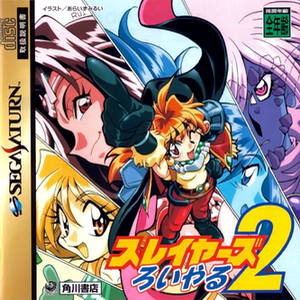
Slayers Royal 2 (スレイヤーズろいやる2) is a tactical role-playing game developed by Onion Egg and published by Entertainment Software Publishing and Kadokawa Shoten in 1998 for the Sega Saturn and in 1999 for the PlayStation, exclusively in Japan. It is a follow-up to 1997's Slayers Royal but is a standalone story in the Slayers franchise and not a direct sequel to its predecessor. The game sold well, but its reviews were mostly only moderately positive.

Ragnagard is 2D arcade fighting game developed by Saurus and System Vision, and published by SNK and Saurus for the Neo Geo arcade, Neo Geo CD and Sega Saturn. The game's characters are all based on Shinto deities.

Puzzle & Action: Treasure Hunt, known in Japan as Puzzle & Action: Nidoarukoto wa Sand-R (2度あることはサンドア〜ル), and as Puzzle & Action: Sand-R, is a puzzle video game released for the Sega Titan Video in 1995, and ported to the Japanese Sega Saturn by CRI in 1996. The Saturn version was re-released for the Satakore range in 1998. Puzzle & Action: Treasure Hunt is the third and final instalment in the Puzzle & Action series, after Puzzle & Action: Tant-R and Puzzle & Action: Ichidant-R. Like the previous games, players play a series of timed mini games to overcome enemies. Two players are supported.
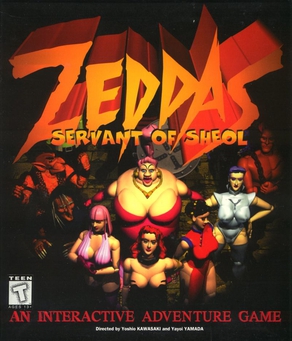
Zeddas: Servant of Sheol, also known as Horror Tour, is a horror adventure video game developed by Japanese studio Caravan Interactive, and published by Synergy Interactive in 1996 for Macintosh, SEGA Saturn, and Windows 3.
Groove on Fight: Gōketsuji Ichizoku 3 is a 1997 Japanese video game for the arcade and the Sega Saturn. It is a fighting game developed by Atlus, and the fourth in the Gōketsuji Ichizoku series. The game has artwork and designs by famed artist Range Murata. The game has a darker tone and is set in the future with only two characters from the prior games returning. Though the game's art and visual style was praised, critics were more lukewarm about the overall gameplay, giving it average scores.

Cotton 2: Magical Night Dreams is a 1997 scrolling shooter arcade video game developed by Success and published by Tecmo. The fourth installment in the Cotton franchise, it is the arcade sequel to Cotton: Fantastic Night Dreams. In the game, players assume the role of either the titular young witch or her rival Appli who, alongside their companions Silk and Needle, sets out on a quest to defeat several monsters and retrieve the missing "Bluewater Willow" candy to Pumpkin Kingdom. Its gameplay is similar to the first game, consisting of shooting mixed with fighting and role-playing game-esque elements using a main three-button configuration. It ran on the ST-V hardware.
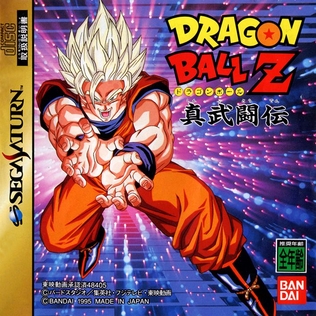
Dragon Ball Z: Shin Butōden is a 1995 fighting video game developed by Tose and published by Bandai for the Sega Saturn. Based upon Akira Toriyama's Dragon Ball franchise, its gameplay is similar to the Super Butōden sub-series, consisting of one-on-one fights featuring special moves, as well as five playable modes including one featuring Mr. Satan as the main character.
















